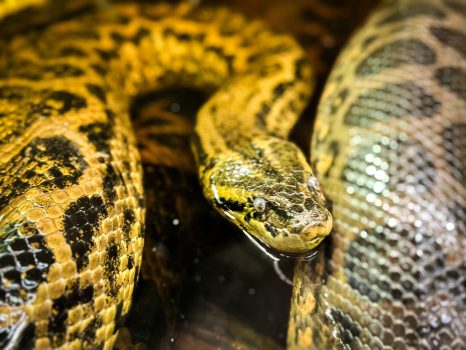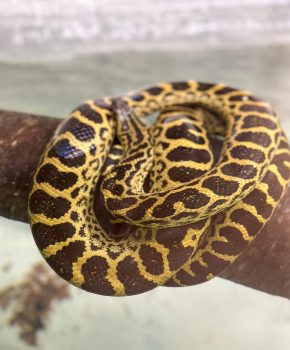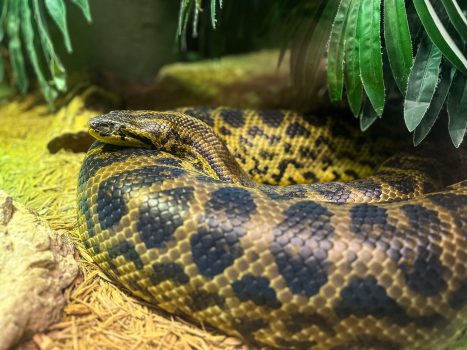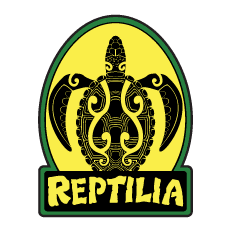Yellow Anaconda
Common Name: Yellow Anaconda
Scientific Name: Eunectes notaeus
Names: N/A
Locations: Whitby, Vaughan and London



Diet
Yellow Anacondas are carnivorous and primarily feed on a variety of prey including fish, birds, mammals, and reptiles. They are ambush predators, lying in wait for their prey before striking with lightning speed and using constriction to subdue large prey.
Average lifespan
In the wild, Yellow Anacondas typically live around 10 to 15 years, though they can live longer in captivity with proper care.
Size
Yellow Anacondas are smaller than their Green Anaconda relatives but are still considered large snakes. They can reach lengths of up to 2.4 to 3 meters (8 to 10 feet).
Weight
Adult Yellow Anacondas can weigh anywhere from 25 to 35 kilograms (55 to 77 pounds) on average.
About
Yellow Anacondas are native to South America, particularly found in the wetlands and marshes of northern Argentina, eastern Bolivia, southern Brazil, Paraguay, and Uruguay. They prefer slow-moving rivers, swamps, and marshes.
Size and behavior
Yellow Anacondas are primarily aquatic and spend much of their time in or near water. They are excellent swimmers and can remain submerged for extended periods, waiting for prey to pass by. Despite their smaller size compared to Green Anacondas, they are still powerful predators and rely on ambush tactics to catch their prey.
Diet and nutrition
Yellow Anacondas have a diet similar to that of their larger relatives, consisting mainly of fish, birds, mammals, and reptiles. They are opportunistic hunters and will consume almost anything they can overpower, including large prey items such as caimans and capybaras.
Conservation status
Yellow Anacondas are not as well-studied as Green Anacondas, but they are generally considered to be of least concern in terms of conservation status. However, like their larger relatives, they face threats from habitat destruction, pollution, hunting for their skin, and conflicts with humans. Conservation efforts focused on habitat protection and sustainable management are important for the long-term survival of Yellow Anacondas.
Fun fact
Despite their smaller size compared to Green Anacondas, Yellow Anacondas are still powerful constrictors and can subdue prey much larger than themselves. They have a distinctive yellowish coloration, which helps them blend in with their swampy habitat.
Call or visit your local Reptilia Facility to learn how you can adopt one of these amazing reptiles.










